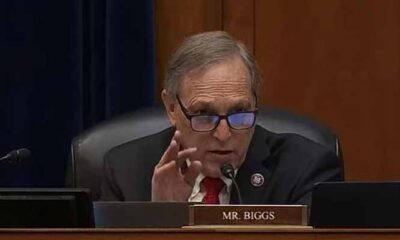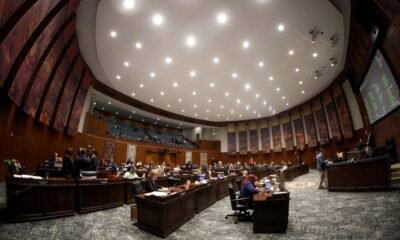Business
As Teacher Burnout Surges, States Race to Address School Job Shortages

As the academic year concludes, superintendents in the U.S. brace for a significant staffing crisis, with one in eight teaching positions unfilled or staffed by underqualified educators. States experiencing post-pandemic teacher shortages have invested millions in hiring bonuses and salary increases to attract replacements and retain experienced teachers. Despite these measures, hiring gaps persist, prompting some states to reevaluate their certification standards.
The shift in teacher training and licensing takes place against a backdrop of challenges in public education, including the diversion of tax revenue to private school vouchers, scrutiny over curriculum contents, and the pressing needs of students affected by pandemic shutdowns. Some surveys indicate that less than 20% of teachers report job satisfaction, a sentiment echoed by Drew Gitomer, an education assessment expert at Rutgers. He highlights the negative impact of political disputes on teaching environments, driving educators away from the profession.
Recently, Illinois enacted a law allowing teacher candidates to begin student teaching before passing content-area exams to lower barriers for underrepresented groups. Additionally, a proposed bill would grant districts more authority regarding the inclusion of student test scores in teacher evaluations, a departure from longstanding mandates.
In New Jersey, new legislation has eliminated the Praxis Core exam requirement for teacher certification, while Nevada seeks to streamline licensure processes for incoming educators. This includes provisions for teachers licensed in other states to start teaching in Nevada immediately and easing the transition for teachers moving between grade levels.
Linda Darling-Hammond, a prominent education analyst, notes that teacher shortages disproportionately affect schools serving low-income and minority students. These shortages often lead to larger class sizes and a higher frequency of substitute teachers, compromising educational stability. Darling-Hammond emphasizes that teacher attrition is a critical issue, with 90% of vacancies attributed to attrition, much of which is not due to retirement.
States have historically struggled to recruit teachers, and while adjustments to credentialing are common, some advocate for careful consideration of these changes. Melissa Tooley from the New America foundation warns that many states’ fast-track certification options may compromise long-term educational quality by allowing candidates with minimal training to enter classrooms.
More than 40 states require teachers to pass the costly Praxis Subject test, which some experts believe excludes capable candidates. Gitomer supports the notion that removing such tests may not be an effective solution to recruitment challenges. He points out that recent eliminations of the edTPA requirement in various states have not significantly improved teacher shortages.
Credentialing systems must balance the need for qualified educators with the necessity of maintaining instructional quality. Gitomer outlines a fragmented national landscape, where some states tighten, while others loosen, entry requirements, with some even permitting non-degreed individuals to teach. For example, Indiana has instituted 80 hours of training on reading methods for specific teaching candidates, though proposals to reduce this requirement have emerged.
Texas aims to gradually limit the number of uncertified teachers in core subjects by the 2029-30 school year, reflecting ongoing concerns about teacher qualifications. Meanwhile, Washington State is implementing programs to encourage paraprofessionals to become certified teachers, capitalizing on their classroom experience.
A recent EdWeek Research Center survey highlights declining mental health and job satisfaction among public school teachers. Many educators advocate for improved mental health support and discipline in schools, with states responding through salary increases. Arkansas has raised its minimum teacher salary to $50,000, while other states, including South Carolina and Connecticut, have implemented similar or higher salary floors.
At the federal level, the proposed American Teacher Act seeks to establish a national minimum salary for teachers at qualifying schools, which could enhance recruitment and retention efforts nationally. The bill, introduced by U.S. Rep. Frederica Wilson, remains under review.


















